Sa Huynh Salt Field
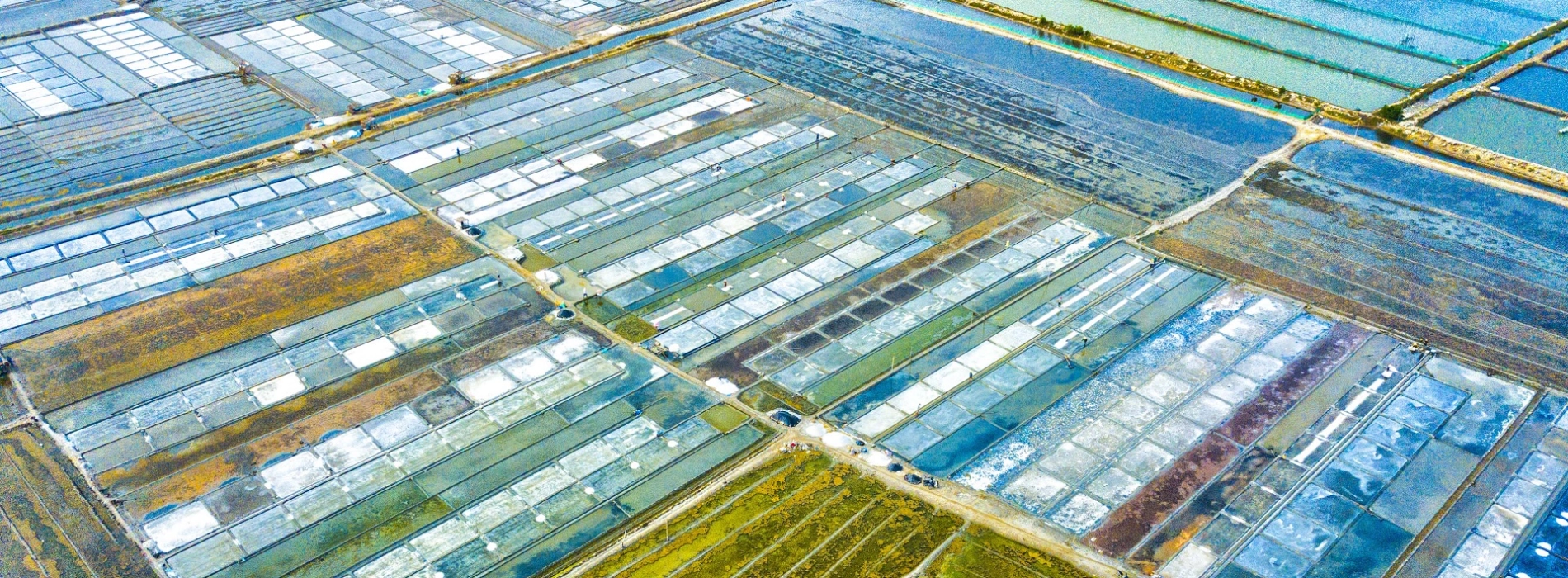
Through years of quiet dedication, Sa Huynh Salt Field in Quang Ngai Province has been shaped beneath blazing sun and sea wind. With that being said, walking on this landscape feels like immersing yourself in a story sculpted by sun, sea, and weathered hands. While you keep going, each step will reveal a chapter of traditional craft which has sustained an entire community for over centuries.
Curious about what makes Sa Huynh Salt Field so special? Keep reading this article with Asia King Travel to find out right away.
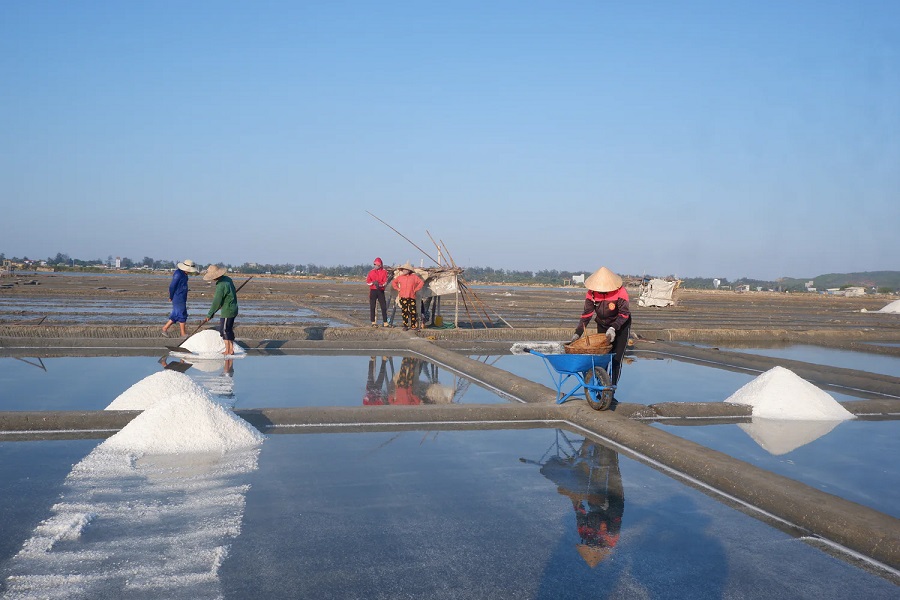
Farmers harvesting salt at Sa Huynh Salt Field
Before Sa Huynh became a name marked on travel maps, it began with a discovery. Centuries ago, a man named Ngo journeyed from the North and settled near Dam Nuoc Man (known as lagoon filled with sea water in English).
One day, he noticed a thin white film on the water’s surface. He touched and watched it crumble into tiny, salty crystals. What began as a simple curiosity soon grew into a vision. He built low earthen walls, shaped square salt pans by hand, and waited. When the first sun-dried harvest came, neighbors gathered in wonder. Little did they know, the thing they saw wasn’t just salt but a whole future ahead.
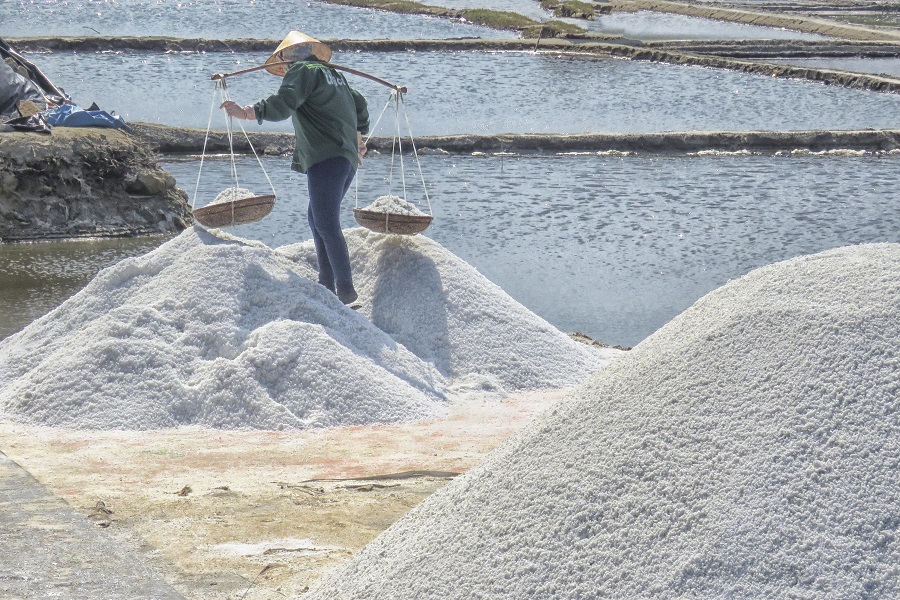
Even during difficult times, the salt workers of Sa Huynh remained committed to their craft
From those first grains, a craft was born and passed from generation to generation. Even in harder times when salt was taxed heavily by the colonial government, Sa Huynh’s salt workers stayed with their craft. They endured, not for profit, but for pride. Therefore, what remains today at Sa Huynh Salt Field is definitely the trace of resilience etched into the land and life of those who shaped it.
Along the sun-drenched shores of Quang Ngai, Sa Huynh Salt Field stretches over 120 hectares wide. However, it feels like you are admiring a landscape that spreads infinitely across the horizon, with reflective waters mirroring the sky and countless interlaced salt pans. Everything was so carefully organized to the point it resembles a huge patchwork quilt.
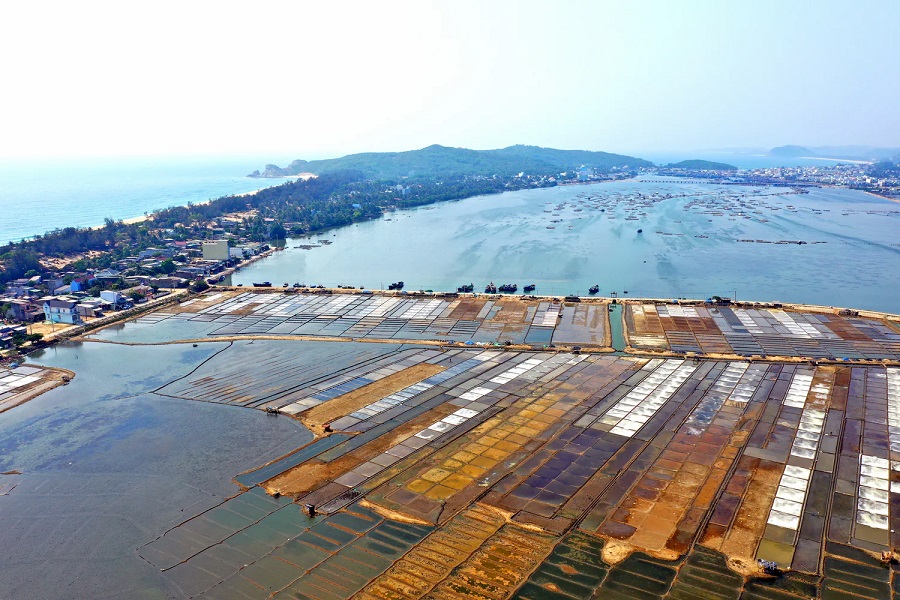
Sa Huynh Salt Field resembles a huge patchwork quilt
With over 600 households involved in salt production, Sa Huynh Salt Field yields between 8,000 and 9,000 tons each year. Beyond its role as an essential source of salt, it also preserves the cultural beauty of a time-honored craft, resonating with other salt-making villages along Central Vietnam’s coast, such as Hon Khoi and Ca Na.
Sa Huynh Salt Field is located in Pho Thanh Commune, Duc Pho District, at the southern tip of Quang Ngai Province, Vietnam. Since it sits only about 60 kilometers away from the city center, a journey to this destination will be close enough for a day trip, yet far enough to feel the untouched atmosphere.
Read more: Vietnam Tour 12 days: North & Center Vietnam Discovery
Though Quang Ngai doesn’t have its own airport, getting to Sa Huynh Salt Field can still be a smooth journey. A nearest choice for travelers is Chu Lai Airport, located in Nui Thanh District of Quang Nam Province.
From Chu Lai, you can reach Quang Ngai City by car, taxi, or shuttle, depending on your starting point and preferences. Once in the city, the route to Sa Huynh Salt Field is quite simple: follow Quang Trung Street, then turn onto National Highway 1A. Stay on this road until you reach the turn for Tay Sa Huynh Bypass. From there, it’s a short 800-meter drive to the destination.
If you ever feel unsure while travelling, don’t hesitate to ask locals. People here are friendly and always ready to help you move in the right direction.
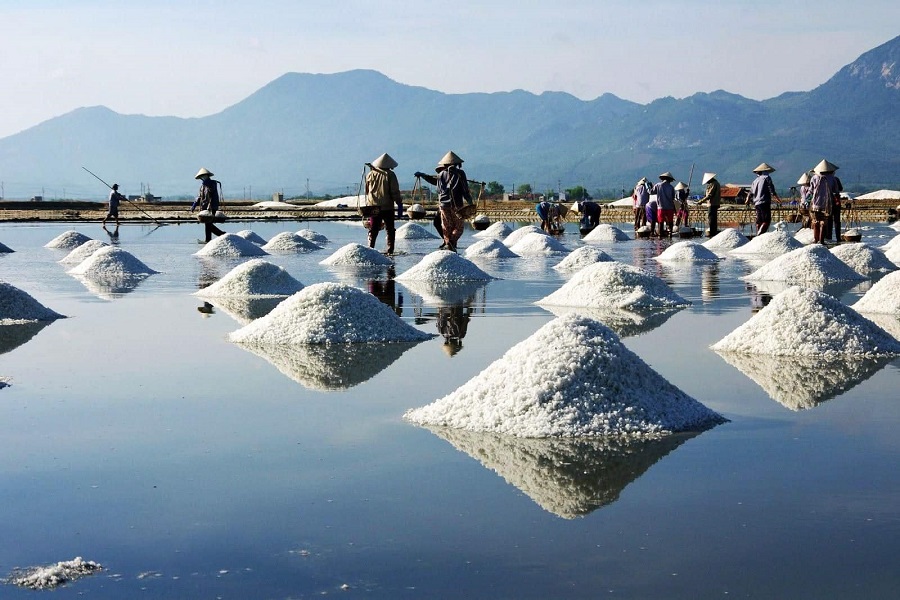
Sa Huynh Salt Field is a vast landscape of reflective waters and interlaced salt dunes stretching to the horizon
One thing you should know is that the salt-making season in Sa Huynh only occurs during dry months (from April to August) so this is the time when people would normally plan their tour in. By contrast, salt cannot form without uninterrupted sunlight. Hence rainy or overcast days can bring the process to a halt, making them less ideal for a trip.
Moreover, in order to fully take in the beauty of Sa Huynh’s shimmering salt fields, there are two recommended timings: first is at dawn between 5:00 and 6:00 AM, the latter is in the late afternoon between 4:00 and 6:00 PM. Visiting during these windows will offer not just great views but favourable weather with less intense sunlight.
With its surreal white landscape and mirror-like salt pans, Sa Huynh Salt Field is able to be an unforgettable backdrop for anyone who would like to take a shot. From wide panoramic ones to close-ups of sparkling salt crystals, there’s a ton of creative angles for you to explore.
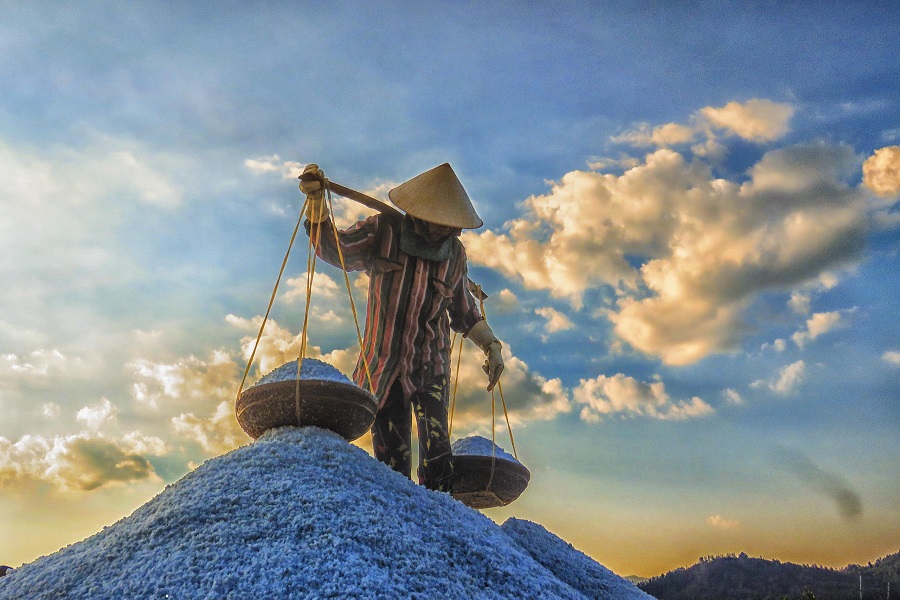
Sa Huynh Salt Field offers a great setting for anyone looking to capture a stunning photo
Just one thing you should keep in mind: the sun can be quite strong, so don’t forget sunscreen, sunglasses, and a hat to keep yourself comfortable while you capture Sa Huynh’s charm.
One of the most interesting activities you can do at Sa Huynh Salt Field is witnessing the age-old process of salt harvesting. As early as 5 AM, you might see farmers quietly gather. Then they guide seawater through canals to shallow salt pans. With practiced hands, they scatter a base layer of seed salt and wait for the sun to do its work. Watching this process is like observing a slow, silent choreography between humans and nature.
If you think observing is not enough to understand how seawater turns into salt, why not roll up your sleeves and try it for yourself? At Sa Huynh, some local families welcome visitors to take part in the process. It’s a hands-on experience that will give you a deeper insight into the effort and craftsmanship behind the local salt-making tradition.
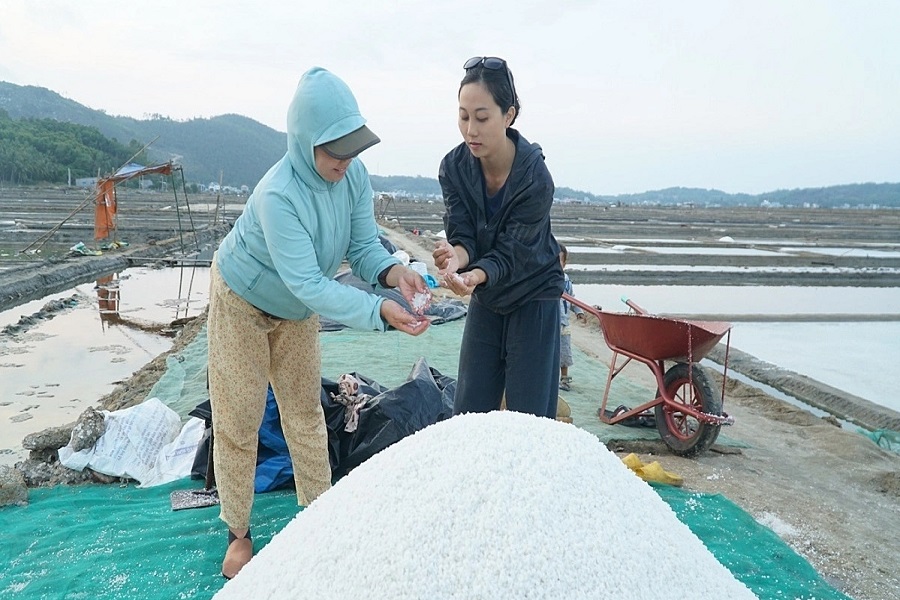
At Sa Huynh Salt Field, visitors can experience making salt by hand alongside local farmers
After joining with the locals in the process, bringing home a large bag of Sa Huynh’s pure salt feels nothing like a typical salt haul at the supermarket. Things get special as you're carrying a piece of their story with you. In addition, this is also a simple yet meaningful way to support the local community.
Sa Huynh Salt Field is a living chapter of Vietnam’s coastal heritage. Here, every small dune of salt speaks volumes about tradition and the deep-rooted bond between the people of Quang Ngai and the sea. Contact Asia King Travel now to plan for your trip to Sa Huynh Salt Field and have the best experience here.
Read more: Center Vietnam Tour 4 days 3 Nights: Center Discovery